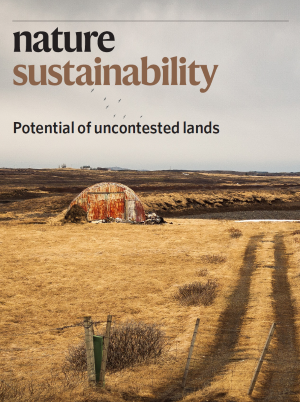331. Conservation opportunities on uncontested lands
Not all agricultural land is productive and valuable. Looking for low-value land might be a useful strategy when seeking to increase the area devoted to conservation. In addition to being relatively cheap to purchase, it may be relatively unlikely to strike problems with social or political opposition.
I’m part of a team of researchers that is looking at this issue, led by Eve McDonald-Madden from the University of Queensland. We have a new open-access paper out in Nature Sustainability that presents a framework for thinking about whether and when restoring low-value, or “uncontested”, agricultural land for conservation purposes is likely to be a good idea.
In the paper, we talk about the different costs that are involved in acquiring and restoring a piece of land. They include the purchase price of the land, which reflects its long-term economic productivity, the transaction costs involved in acquiring the land, and the cost of restoring the land to an improved ecological condition.
We suggest that these costs are likely to be related systematically to the opportunity cost of the land for agriculture (that is, the amount of income that would have to be given up if the land was converted away from agricultural production), but that the patterns may vary.
 If the reason for some land having a very low opportunity cost is that it is highly degraded and therefore unproductive, the restoration cost may be particularly high. Restoring the most degraded lands is more difficult and more expensive. In that case, it might be better to seek to acquire and restore land that is degraded, but not so extremely degraded.
If the reason for some land having a very low opportunity cost is that it is highly degraded and therefore unproductive, the restoration cost may be particularly high. Restoring the most degraded lands is more difficult and more expensive. In that case, it might be better to seek to acquire and restore land that is degraded, but not so extremely degraded.
If the reason for agricultural land having a low opportunity cost is low market prices for agricultural outputs, rather than land degradation, then there is no reason to expect this land to be especially expensive to restore, potentially making it an attractive target for restoration. Although, not necessarily. Whether the purchase price would be particularly low depends in part on farmers expectations about future prices, not just current prices.
In some situations, acquiring land involves particularly high transaction costs. This might be the case, for example, if there is social and political oppositon to conversion of agricultural land to conservation land. As a generalisation, we might expect that to be less of an issue if the land is degraded and unproductive for agriculture.
Another example of high transation costs could be the effects of corruption. “If corruption is socially normalized, this may lead to low levels of trust, with the result that parties incur high costs for negotiation, contracting and monitoring an agreement. If legal institutions are weak, the cost of enforcing an agreement could be very high.” In this case, even though the land might be cheap, the overall cost might mean it is better to look in a less-corrupt country for land to restore.
Recognising those complexities, we are using spatial data to try to identify cost-effective opportunities for investing in restoration of land.
Further reading
Xie, Z., Game, E.T., Hobbs, R.J., Pannell, D.J., Phinn, S.R., and McDonald-Madden, E. (2020). Conservation opportunities on uncontested lands, Nature Sustainability 3, 9–15. Journal web page (open access)
I have heard that some good restoration work has been done in Brazil:
http://www.cycling-togethearth.org/en/instituto-terra/
http://www.foreststreesagroforestry.org/land-restoration-through-agroforestry-in-brazil/
Maybe this is the way through which we can save our planet?
One thing that disturbs me about this approach is that the conservation estate, rather than being strategically determined, is based on land that no-one else wants.
A fair concern. We’re not thinking getting land cheaply is the only criterion. The cost is one factor to consider, along with all the factors that influence the benefits of a conservation project. It also needs to be considered in the context of an overall portfolio of conservation investments, of various types. Within that context, appropriate consideration of costs can contribute to achieving more for conservation, rather than less.
So this would not replace a strategic approach. It is just a factor to consider within a strategic approach.